|
This adult male Purple Martin was photographed at Bay City, Oregon with the tripod-mounted Canon 800mm f/5.L IS lens, the 1.4X III TC, and the Canon EOS-1D Mark IV. ISO 400. Evaluative metering at +2 1/3 stops as framed: 1/320 sec. at f/11 in Manual mode in early morning light on a clear day at 8:05am. I pushed the exposure as far to the right as possible without getting any blinkies in the sky or on the post to ensure maximum detail in the dark glossy feathers. Central sensor (by necessity) AI Servo/Rear Focus AF and re-compose. Click here if you missed the Rear Focus Tutorial. Click on the image for a larger, sharper version. (Some of the images posted here suffer from Word Press compression when viewed at the smaller size.) |
Tualatin River Bird Festival
Thanks to the generosity of Canon USA/Explorers of Light who sponsored my visit I enjoyed a wonderful long weekend in Tigard, Oregon. BAA fan and new friend Doug Schurman picked me up at the Portland Airport early on Thursday evening. He drove us to Tillamook, OR so that we could scout for the Sunday morning in-the-field workshop. Morro Bay IPT veteran Don Nelson our guide and my host for the weekend met us at 6:30 am on Thursday. Our first and best stop was at a unique Purple Martin colony on the bay at Bay City, OR just north of Tillamook. We returned on Sunday morning by bus to the delight of the 15 participants.
All three of my programs were well-received and the audiences were large, warm, and attentive. Thanks to Norman Penner for inviting me and to Canon EoL’s Steve Inglima for approving the trip. Both Doug and Don treated me like royalty and their kindnesses were greatly appreciated. It is nice to feel like King for a Weekend every now and then.
|
This adult male Purple Martin on the same piling was photographed at Bay City, Oregon with the tripod-mounted Canon 800mm f/5.L IS lens, the 1.4X III TC, and the Canon EOS-1D Mark IV. ISO 400. Evaluative metering at +3 stops off the sky: 1/320 sec. at f/9 in Manual mode. This image was created on Thursday at 7:54 am when a cloud briefly covered the sun. Central sensor (by necessity) AI Servo/Rear Focus AF and re-compose. Click here if you missed the Rear Focus Tutorial. Click on the image for a larger version. |
Which Do You Like Best?
Which of the two images above do you prefer, the first image made in early morning light or the second made in white sky conditions. Please let us know why.
|
This image of the colony was created with the Canon 24-105mm L IS lens hand held at 24mm and the EOS-1D Mark IV. ISO 200. Evaluative metering +1 2/3 stops: 1/250 sec. at f/11. Central sensor (by necessity) AI Servo/Rear Focus AF and re-compose. Click here if you missed the Rear Focus Tutorial. Click on the image for a larger, sharper version. |
Purple Martin Magic
The rather dilapidated colony at Bay City, OR was perfect for early morning photography as the pilings were right on sun angle and there were several fairly decent thin perches provided by the rotting pilings. In 28 years of bird photography I had never previously enjoyed photographing this species on halfway decent perches.
|
This yawning adult female Purple Martin was photographed at Bay City, Oregon with the tripod-mounted Canon 800mm f/5.L IS lens, the 1.4X III TC, and the Canon EOS-1D Mark IV. ISO 400. Evaluative metering at +2 stops as framed: 1/320 sec. at f/14 in Manual mode in early morning light on a clear day at 7:40am. Central sensor (by necessity) AI Servo/Rear Focus AF and re-compose. Click here if you missed the Rear Focus Tutorial. Click on the image for a larger, sharper version. (Some of the images posted here suffer from Word Press compression when viewed at the smaller size.) |
I loved the yawn and the erect posture of this female.
|
This pair of Purple Martins was photographed sitting atop there decrepit nest box with the tripod-mounted Canon 800mm f/5.L IS lens, the 1.4X III TC, and the Canon EOS-1D Mark IV. ISO 400. Evaluative metering at +1 1/3 stops as framed: 1/1000 sec. at f/8 in Manual mode in morning light on a clear day at 8:19am. Central sensor (by necessity) AI Servo/Rear Focus AF and re-compose. Click here if you missed the Rear Focus Tutorial. Click on the image for a larger, sharper version. (Some of the images posted here suffer from Word Press compression when viewed at the smaller size.) |
It can never hurt to make images of interesting situations rather than creating only images that feature single birds set against clean backgrounds. Though the nest boxes were in need of repair the birds loved them and Don told me that the colony produces lots of young each year.
B&H Double Rebates Include the 5D Mark III
Click here. Select one of four current Canon camera bodies–both the EOS-5D Mark III and the EOS-7D are in the group. Add a lens–there are 30 in the group, a Series III teleconverter, or a Speedlite, and enjoy large double rebates. The lenses include lots of my favorites: the 70-200mm f/4 L IS, the 70-200mm f/2.8L IS II, the circle lens, the 180 macro, and the 300mm f/4L IS. You can check the specs on all Canon telephoto lenses here. This double rebate offer expires on April 2, 2012.
Nikon Dslr + Lens Bundle Rebates
Click here for details. Offer includes the brand new D3200 and the D7000.
Shopper’s Guide.
Support both the Bulletins and the Blog by making all your B & H purchases here.
Below is a list of the gear talked about in this blog post. Thanks a stack to all who have used the Shopper’s Guide links to purchase their gear as a thank you for all the free information that we bring you on the Blog and in the Bulletins. Before you purchase anything be sure to check out the advice in our Shopper’s Guide.
Shopper’s Guide
Below is a list of the gear used to create the images in today’s post. Thanks a stack to all who have used the Shopper’s Guide links to purchase their gear as a thank you for all the free information that we bring you on the Blog and in the Bulletins. Before you purchase anything be sure to check out the advice in our Shopper’s Guide.
Canon 800mm f/5.6L IS lens. Right now this is my all time favorite super-telephoto lens.
Canon 24-105mm L IS lens. I never head into the field without this versatile B-roll lens in my X-trahand vest.
Canon EF 1.4X III TC. This new TC is designed to work best with the new Series II super-telephoto lenses.
Canon EOS-1D Mark IV professional digital camera body. The very best professional digital camera body that I have ever used.
And from the BAA On-line Store:
LensCoats. I have a LensCoat on each of my big lenses to protect them from nicks and thus increase their re-sales value. All my big lens LensCoat stuff is in Hardwood Snow pattern.
LegCoat Tripod Leg Covers. I have four tripods active and each has a Hardwood Snow LegCoat on it to help prevent further damage to my tender shoulders 🙂 And you will love them in mega-cold weather….
Gitzo GT3530LS Tripod. This one will last you a lifetime.
Mongoose M3.6 Tripod Head. Right now this is the best tripod head around for use with lenses that weigh less than 9 pounds. For heavier lenses, check out the Wimberley V2 head.
CR-80 Replacement Foot for Canon 800. When using the 800 on a Mongoose as I do, replacing the lens foot with this accessory lets the lens sit like a dog whether pointed up or down and prevents wind-blown spinning of your lens on breezy days by centering the lens directly over the tripod.
Double Bubble Level. You will find one in my camera’s hot shoe whenever I am not using flash.
The Lens Align Mark II. I use the Lens Align Mark II pretty much religiously to micro-adjust all of my gear an average of once a month and always before a major trip. Enjoy our free comprehensive tutorial here.
BreezeBrowser. I do not see how any digital photographer can exist without this program.

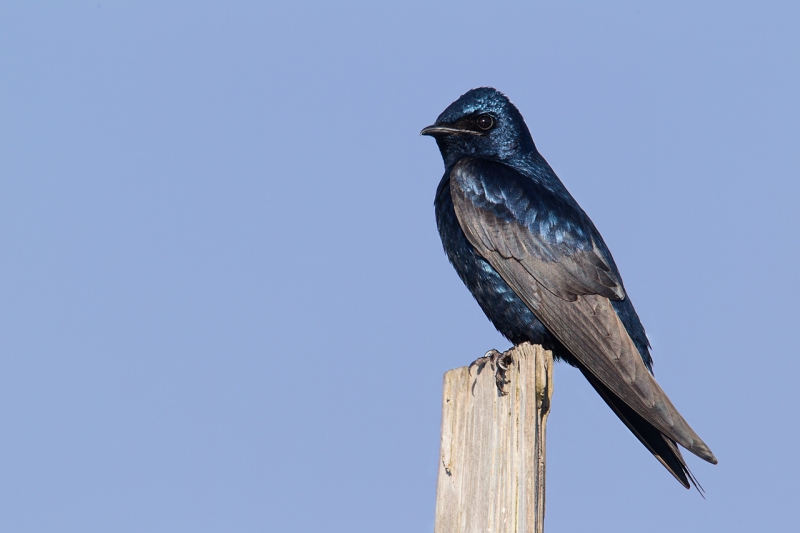
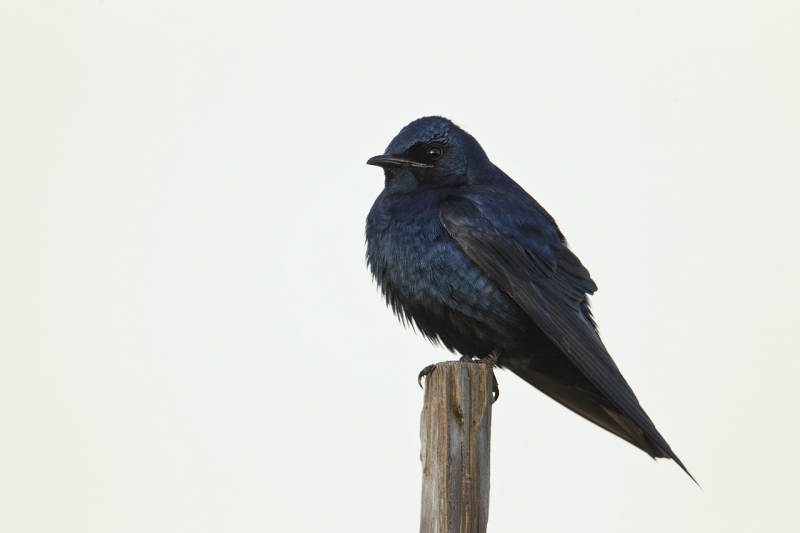
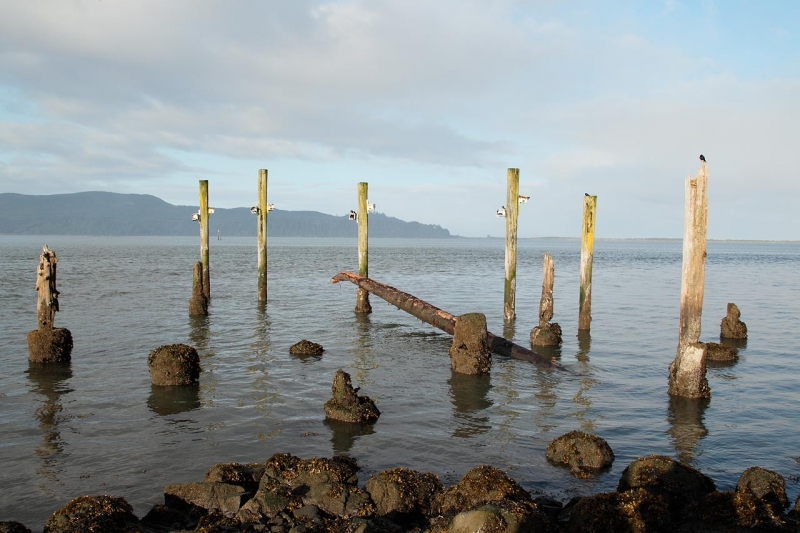
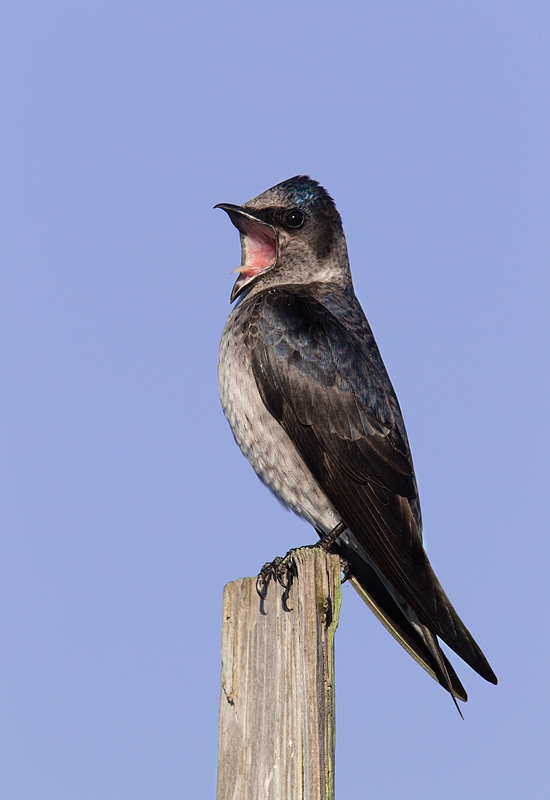
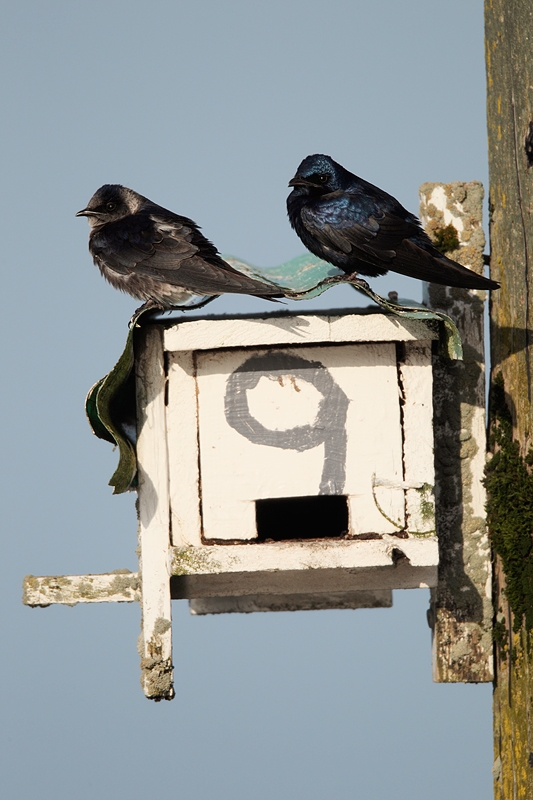














I like the yawning female best. Nice detail. I think also that the female Purple martins make more interesting subjects because of their coloration, of course just my opinion. I have photographed those martins at the end Bay City Oyster Co. dike for three or four years now. Also turnstones, dunlin, d-c cormorants, and least sandpipers. It is a great spot to photograph birds. I need more than 400mm though.
Yes … I see it in all your Images . According to Leonardo de Vinci , it’s the way we perceive our World . It is natural for all , but , like all things it is a special tool with Awareness . The Golden Ratio/Mean/Rectangle/Spiral is what makes the Renaissance Paintings what they are … along with ” a lot of good brush strokes . “
Thanks for the additional info and your kind words.
What is the “.68 position” ? It is my slang term for the ” Golden Rules of Composition .” Namely, the Leonardo’s , [ Fibonacci’s Golden ratio , and da Vinci’s research on how the eye sees … it focuses on an area whose ratio is .618 to 1 ] . That is, for whatever field of view the eye is seeing , it naturally focus’s on an area .618 of the distance horizontally [ from left to right and right to left ]. and the same vertically . Objects placed at these locations appear more dimensional . In the first Image, the birds eye is about .618 of the distance from left to right … and nearly so from bottom to top. The upper portion of it’s wing really stands out … the tip is .618 left to right … and the angle moves to a position from there to a point from right side top down .618 of the length to the bottom . One can take a piece of paper with an image on it , and fold it so whatever part one wishes to standout [ ” POP ” ] is at these locations , and it will ” come to life .” Other names associated with same is ” Golden Rectangle and Golden Spiral ,”
Thanks Christian. Never heard it called that. I do not actively consider it but I am sure that I wind up there often :).
I like the second one cause of the fuller shape of the bird.
In a way, the second background makes it stand out more because of the contrast of dark and light, whereas on the first one, the bird kind of blends in with the blue sky. Blue is pretty, but that doesn’t make it an automatic.
I like #2 for more detail, less contrast on the bird :).
No contest…number 1 is the best. The subtle glowing colors of this bird need early morning light, the blue sky is natural and good lighting for this bird.
From your mouth to … 🙂
I like the first shot of the two the best. The morning light always brings out the best details. The colors are so beautiful and every bit of detail is visible. The yawning Purple Martin, well what can I say, it had a long night out and showed up for you bright and early :)) beautifully done. Thanks.
Namaste bhai. Shukria for visiting. See below to learn why I like the 2nd one better. 🙂
Fascinating. If you were judging these as a photo contest, most of us, who would have submitted the first image over the second, would not have won. Thanks also for explaining your composition choice for the first image. It makes sense.
David
Neither would have done anything in a contest that I was judging. Good images but nothing special. If anything, I would have entered the yawning female but would not expect it to do very well in most contests these days… And YAW. artie
Image 3, the yawning purple martin is my favorite (it’s not just another perched bird-though I do like perched bird shots). I would guess it’s a morning shot, given that it looks similar in color to image 1. That said, image 1 is preferred over image 2. First, the blue background is preferable to the gray/white background. Second, and more significantly, the colors on the bird come out more in image 1. While you can see the blue in the bird in image 2, it is darker, while in image 1 you have the light giving a nice sheen to the feathers. It probably wouldn’t be as noticeable except for the white background.
Thanks for sharing your thoughts. I am the odd-person out here as I prefer the white sky version for less contrast on the glossy feathers. :
Oh my! These little males are snappy dressers! The full sun image wins in the first two. You need the sunlight to see the irridescence in that beautiful plumage. The Yawning! It could be a movie title! Great image though. And I love the family at home shot too, but it looks like they could do with a few more nest boxes. Is the water not too rough at times there?
Thanks for your kind words. Water is too rough only when a tsunami hits….
I don’t even want to think about it after the tsunami at Midway last year! 🙁
We had several colonies of purple martins on our farm in middle Georgia back in the 60s and 70s.
They are fantastic flyers and provided me with hours of enjoyment, watching them in their incredible aerial maneuvers.
These are beautiful images. I find the location, both state-wise and the locale, quite interesting!! Thanks for sending these.
YAW. Do any of your locations have decent perches for the birds? If not, you might try erecting some.
The yawning bird is my favorite. As for the first 2 images, the version with the blue sky background is my preferred one. The detail on the bird is more apparent with the sun shining on it.
Thanks Charles. Hope to see you before the Galapagos trip! Hey, I will, at Bosque. Super. Are you planning on a 500 or 600 IS II?
I’m on the fence until the 1DX is out – I love the 800 and I can’t see myself going to a full frame body AND down to 600mm at the same time. That would be too much lost focal length capability for my purposes. I’m thinking that the 1DX + 800 will be a killer combo. The lighter weight of the 600 IS II is very appealing though. I might end up going for the 500 IS II because I do miss that focal length sometimes. Decisions 🙂
600 f/4 will always beat 800 f/5.6 for folks who can make sharp images with either TC…. Why? More versatility. And 840 > 800. And 1200 is greater than 1120 (the latter for those with cameras that focus to f/8). Thus, the camera is irrelevant. 🙂
ps: I have ordered both the 500IS II and the 600 IS II and today ordered my very own 300 f/2.8L IS II. 🙂
If I had the luxury, I would order all 3 of them 🙂
Right now I shoot 75-80% of the time with the 800 by itself, no TC. I know if I get the 600 I’ll have the 1.4x TC on it all the time. I do agree it is more versatile – I’ll wait and see how it performs. If the MkIII TCs are as good as Canon says they are with the new IS II lenses, then I may make the switch.
Whatever you decide I know that you will continue to create some great images. As we both know, good photographers make good images 🙂 artie
The ” Yawning ” female is great … The ” Top ” Male is awesome because of color, contrast , and pose . I prefer the horizontal format most of the time with birds because it shows more of their environment . I also like the .68 position .
Thanks, but what is the “.68 position”?
My favorites are the yawning female and then the first image. I think I might have composed the first image as you did the yawning female, and obviously you thought differently. Why?
I was farther away for the first image and the male was not sitting up as erectly as the female.
Love the first one… Shows the purple detail. The yawn is great too!
Thanks for stopping by Pat.
I love that open-mouthed female! Glad you had such a great trip and sounds like you made some good friends!
Thanks Lady D. Lots!